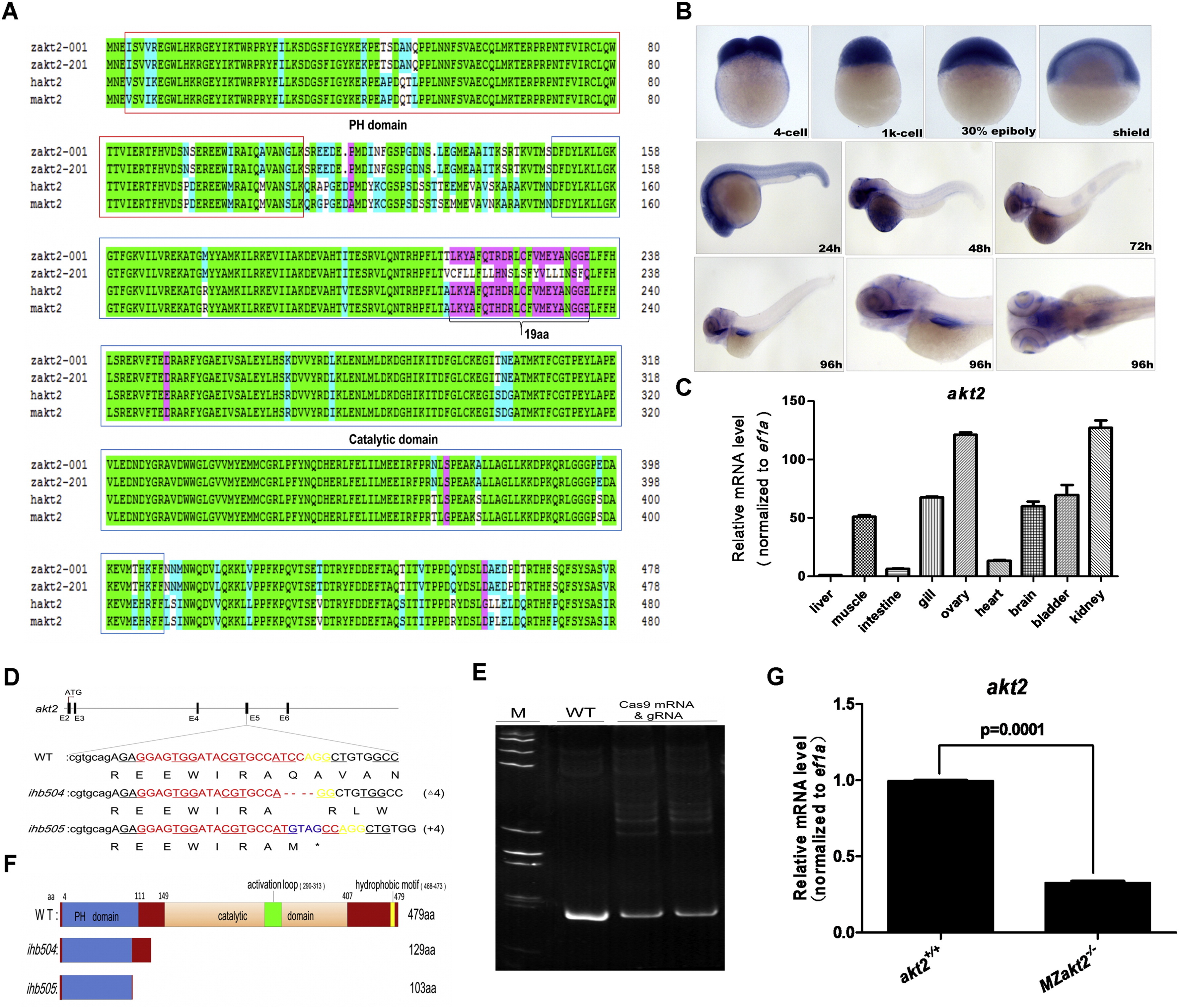Fig. 1
Expression of akt2 and disruption of akt2 via CRISPR/Cas9 technology. (A) Alignment of amino acid sequences of human akt2 (ENSG00000105221), mouse akt2 (ENSMUSG00000004056), and zebrafish akt2 (ENSDARG00000011219). Zakt2-001 and zakt2-201 represent the amino acid sequences of two transcripts of akt2 gene in zebrafish. The homologous degrees of amino acid sequence from high to low are marked by green, pink, light blue, and white. (B) Whole-mount in situ hybridization staining for zebrafish akt2 expression at different developmental stages during embryogenesis. (C) The expression level of akt2 in nine tissues of adult zebrafish as revealed by semi-quantitative RT-PCR assays. (D) The location of sgRNA targeting sites on zebrafish akt2, and the sequences of targeting sites from the mutant akt2ihb504 and the mutant akt2ihb505. Dashes, deletion; purple letters, insertion. (E) Verification of the efficiency of CRISPR/Cas9-mediated zebrafish akt2 disruption by HMA. Genomic DNA was prepared from the pools of injected embryos. The injected (Cas9 mRNA & gRNA) pools contain heteroduplex band, indicating that the site has been disrupted. (F) Schematic representation of the putative peptides of two wild-type transcripts and the two mutated akt2 peptides from the targeted allele. (G) The relative levels of the wild-type and homozygous mutant (akt2ihb504/ihb504) transcripts from larvae at 5 dpf were detected by RT-PCR. MZakt2−/− indicated maternal-zygotic mutants obtained from the offspring of homozygous intercrosses.
Reprinted from Mechanisms of Development, 143, Zhang, D., Wang, J., Zhou, C., Xiao, W., Zebrafish akt2 is essential for survival, growth, bone development, and glucose homeostasis, 42-52, Copyright (2017) with permission from Elsevier. Full text @ Mech. Dev.

